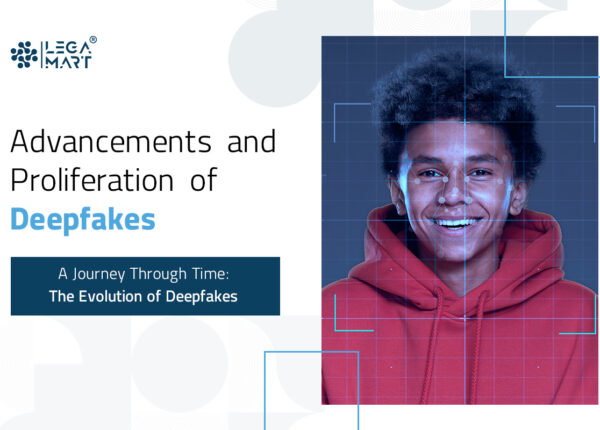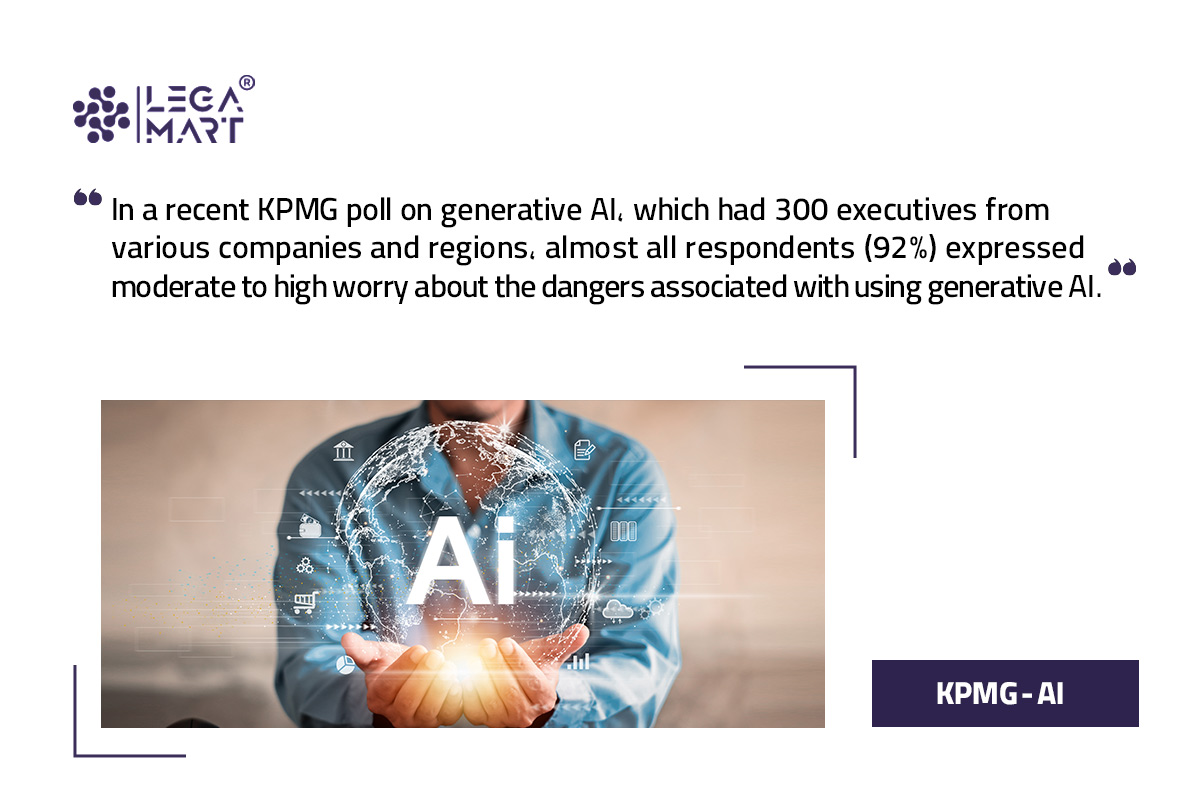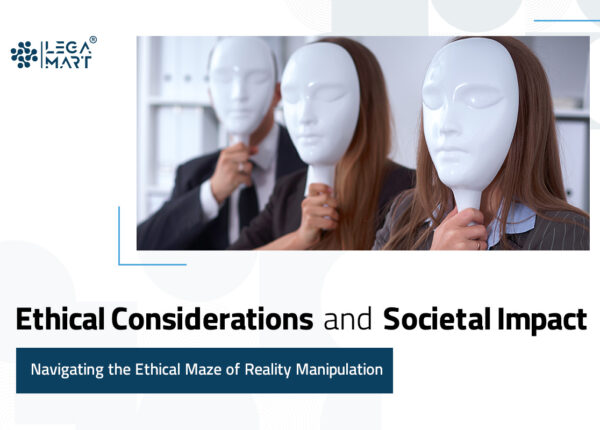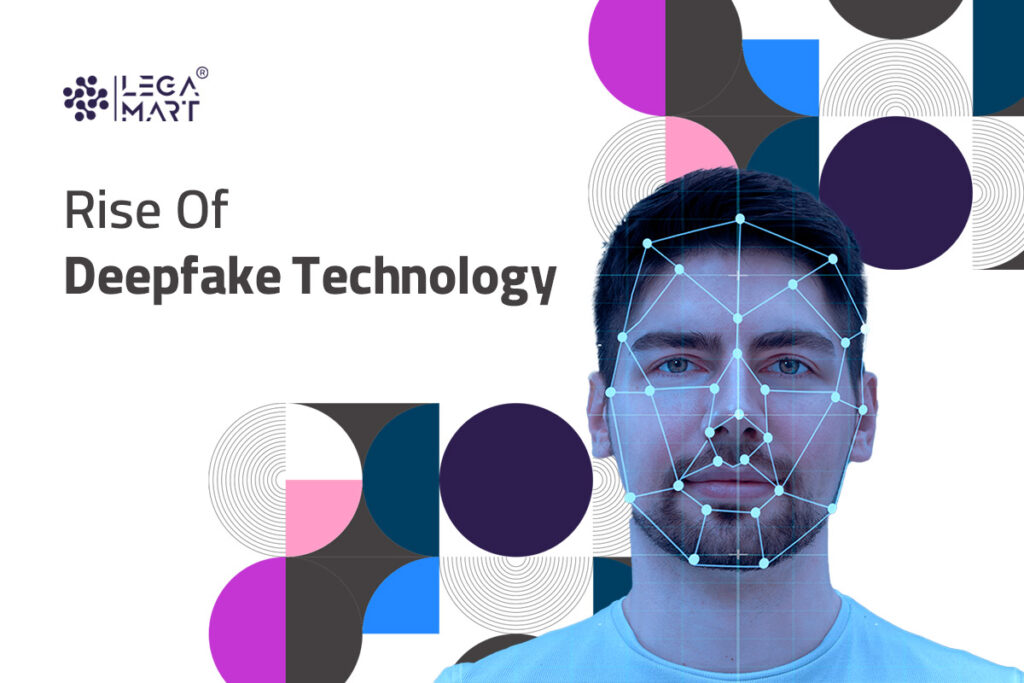Introduction to Deepfake Technology
In the fast-evolving digital landscape, a new technology has emerged that fascinates and alarms: deepfake technology. The term “deepfake” – a portmanteau of “deep learning” and “fake” – refers to synthetic media where images, videos, or audio clips are manipulated using advanced artificial intelligence (AI) and machine learning algorithms. These alterations create highly realistic yet entirely fabricated representations that challenge our perception of reality. From their inception to their current state, deepfakes have rapidly evolved, becoming increasingly sophisticated and accessible to the general public.
Deepfakes first gained significant attention in the late 2010s, capturing the public’s imagination and concern. Initially, they were mostly limited to entertainment and benign parody. However, it wasn’t long before their potential for harm became evident. Today, technology underscores a critical juncture in the digital era: the thinning line between truth and fiction.
The creation of deepfakes is rooted in deep learning, a subset of AI that mimics the neural networks of the human brain. By ingesting vast amounts of data – images, video clips, or voice recordings – these algorithms learn to recreate and alter human likenesses with startling accuracy. This technology has progressed rapidly, thanks to advancements in AI and the increasing availability of data and computational power.
The article will examine the development of deepfake technology from its infancy to the present, examining its ramifications, obstacles it presents across a range of industries, and the diverse initiatives undertaken to lessen its possibly detrimental effects. Come along with us as we negotiate the intricate and dynamic world of deepfakes, where reality’s limits are constantly being redefined.
Advancements and Proliferation of Deepfakes

A Journey Through Time: The Evolution of Deepfakes
The history of deepfakes starts in academic study, when, as early as the 1990s, the idea of using artificial intelligence for image processing was investigated. However, deepfakes were not widely recognized until the middle of the 2010s. An important turning point was the development of neural networks and the introduction of Generative Adversarial Networks (GANs) in 2014. These GANs, developed by Ian Goodfellow and others, were the foundation for deepfake technology, allowing for increasingly complex and lifelike manipulations.
Initially, the creation of deepfakes required significant computational resources and technical expertise, limiting their use to researchers and hobbyists. The early examples, while intriguing, often lacked the realism that today’s deepfakes possess. However, as technology progressed, so did the quality and accessibility of deepfakes. Open-source projects and user-friendly applications began to emerge, democratizing the ability to create convincing deepfakes. This ease of access has led to a surge in the production and distribution of deepfake content across the internet.
The Realism Revolution: Blurring the Lines Between Fact and Fiction
The realism of deepfakes has reached levels that are not just convincing but often indistinguishable from genuine content. This leap in realism is attributed to improvements in AI algorithms, increased computational power, and the vast availability of data to train these models. The deep learning systems behind deepfakes have become adept at analyzing and replicating human features, expressions, and voice patterns with unnerving precision.
One of the most significant advancements in deepfake technology is the ability to manipulate video and audio in real-time. This has opened the door to live deepfake applications, where individuals can appear as someone else during video calls or streams. The implications of this advancement are far-reaching, extending beyond mere entertainment to realms like politics, where the potential for misuse is a growing concern.
The rise of deepfakes has also been fueled by the proliferation of social media and the increasing consumption of digital media. Platforms, where videos are easily shared and viewed by millions, provide a fertile ground for the spread of deepfakes. This widespread dissemination, coupled with the human tendency to trust visual and auditory content, has made deepfakes an effective tool for spreading misinformation and disinformation.
Implications of Deepfake Technology
The Dual Edges of Misinformation and Disinformation
Deepfake technology has ushered in an era where seeing is no longer believing. The capability of deepfakes to spread misinformation and disinformation with unprecedented efficiency and believability is perhaps their most alarming aspect. These fabricated representations can be weaponized to create false narratives, misleading the public on a massive scale. The implications are vast, ranging from sowing political discord to causing social unrest. Imagine a world where deepfakes are used to create fake news involving public figures or to falsify events, leading to widespread misinformation. This threat to the very fabric of truth presents a formidable challenge to societies globally, underscoring the urgency to develop robust mechanisms to detect and counteract these deceptive creations.
Invasion of Privacy: A New Digital Nightmare
In a world where personal boundaries are increasingly respected, deepfakes represent a disturbing breach of privacy. The use of this technology to create non-consensual explicit content is a harrowing reality, where individuals’ likenesses can be superimposed into inappropriate contexts without their consent. This form of digital violation not only invades privacy but also has the potential to cause severe emotional distress and reputational damage. Victims of such deepfakes often find themselves powerless, their images manipulated and shared across the internet. This misuse of technology raises critical ethical questions and calls for legal measures to protect individuals from such exploitation.

Deepfake content is a risk element currently being discussed in boardrooms rather than just on social media, dating apps, and in the entertainment sector. For example, in a recent KPMG poll on generative AI, which had 300 executives from various companies and regions, almost all respondents (92%) expressed moderate to high worry about the dangers associated with using generative AI. Additionally, the poll discovered that these corporate executives’ top three areas of concern for management and mitigation include liability (46 per cent), privacy issues with personal data (53 per cent), and cyber security (53 per cent).
Legal and Judicial Challenges: Questioning the Evidence
The legal system, built on the bedrock of evidence and truth, faces unprecedented challenges in the age of deepfakes. The ability to manipulate audio and video content so convincingly means that the authenticity of evidence presented in courtrooms can be questioned. This blurring of lines between real and fabricated content complicates legal proceedings, potentially leading to wrongful convictions or acquittals. The judicial system must adapt to this new reality, equipping itself with the tools and expertise to distinguish between genuine and manipulated evidence, a task that is becoming increasingly difficult as deepfake technology continues to advance.
Political Manipulation: Undermining Democratic Processes
The political arena is not immune to the disruptions caused by deepfakes. The potential for using this technology to create fake speeches, interviews, or incriminating videos of political figures poses a serious threat to the integrity of democratic processes. Deepfakes can be employed to manipulate public opinion, discredit political opponents, or even influence election outcomes. This form of digital manipulation can erode public trust in political institutions and leaders, exacerbating the already prevalent issue of political polarization. It is a stark reminder of the need for vigilance and critical thinking in the digital age, where manipulation can be as simple as a well-crafted deepfake.
Deepfakes as a Cybersecurity Threat
A New Frontier in Cybercrime: Identity Theft and Social Engineering
In the shadowy corridors of cybercrime, deepfakes represent a chilling evolution. The same technology that can entertain and amaze also holds the power to deceive and manipulate in more sinister ways. Deepfakes have emerged as a formidable tool for identity theft and social engineering scams, exploiting the trust we place in familiar faces and voices. Imagine receiving a video call from a family member asking for urgent financial help, only to discover later that it was a deepfake used by scammers. Or consider the implications of a CEO seemingly issuing directives in a video, leading to fraudulent financial transactions. These scenarios are no longer the stuff of science fiction but real possibilities in our increasingly digital world. As deepfakes become more sophisticated, distinguishing between genuine interactions and malicious fabrications becomes a formidable challenge, making it imperative to foster scepticism and verify identities in digital communications.
The Corporate World’s New Achilles Heel: Reputation and Security Risks
For businesses and organizations, deepfakes pose a threat that transcends traditional cybersecurity measures. The corporate world, already grappling with protecting data and financial assets, now faces a novel challenge: safeguarding its reputation and authenticity against deepfake attacks. Consider the potential impact of a deepfake video depicting a company executive engaging in unethical behaviour or making false statements. Such content, even when debunked, can cause lasting damage to a company’s reputation and stakeholder trust. Furthermore, deepfakes can be used in sophisticated phishing schemes, targeting employees with seemingly legitimate instructions from superiors, leading to data breaches or financial losses. The threat is not just external; internal security measures must also evolve to detect and prevent the creation and dissemination of deepfakes within the organization. In this new era, a company’s digital security strategy must include defences against the insidious threat of deepfakes, combining technological tools with employee education and robust verification protocols.
Ethical Considerations and Societal Impact

Navigating the Ethical Maze of Reality Manipulation
At the heart of the deepfake phenomenon lies a web of ethical dilemmas, challenging our understanding of truth and morality in the digital age. Deepfakes, by their very nature, blur the lines between reality and fiction, raising profound ethical questions. Is it morally acceptable to manipulate someone’s image or voice, even for seemingly benign purposes? Where do we draw the line between creative expression and unethical deception? These questions become even more pressing when considering the potential for deepfakes to cause harm. The unethical use of this technology to create non-consensual explicit content or to spread false information for malicious purposes highlights the dark side of this innovation. As we marvel at the capabilities of deepfakes, we must also grapple with the ethical responsibilities that come with such power. The conversation around deepfakes is not just about technological prowess but also about the moral compass guiding its use.
The Ripple Effect on Society: Eroding Trust in Media and Communications
Deepfakes don’t just impact individuals; they have a broader societal impact, particularly on how we perceive and trust media and communications. In an era where information is readily accessible, the introduction of convincingly manipulated content adds a layer of scepticism to our consumption of media. The potential for deepfakes to be used as tools of misinformation challenges the credibility of video and audio content, traditionally seen as reliable sources of information. This erosion of trust extends beyond the realm of social media and news outlets to affect personal communications and professional interactions. As deepfakes become more prevalent, the ability to trust what we see and hear is diminished, leading to a society where scepticism and doubt pervade our interactions with digital media. This shift in trust dynamics has profound implications, affecting everything from journalism and politics to interpersonal relationships and personal security.
Safeguards and Countermeasures
Building a Fortress: Technological Solutions Against Deepfakes
In the arms race against deepfakes, technology plays both the role of the villain and the hero. As much as AI fuels the creation of deepfakes, it also powers the tools to combat them. In this digital tug-of-war, researchers and tech companies are developing sophisticated methods to detect deepfakes. These tools often use machine learning algorithms to spot inconsistencies and anomalies in videos and audio that are not perceptible to the human eye or ear. For example, subtle irregularities in facial movements or voice patterns can be telltale signs of a deepfake. The ongoing development of such detection technologies is akin to building a digital fortress, safeguarding the authenticity of media in an era of rampant manipulation. However, this is not a static battle; as deepfake technology evolves, so must the tools designed to detect them, leading to a continuous cycle of innovation and adaptation.
Empowering the Public: Education and Media Literacy
In the fight against deepfakes, knowledge is power. Educating the public about the existence and nature of deepfakes is crucial. This goes beyond mere awareness; it involves nurturing media literacy and teaching people to critically evaluate the content they consume. Workshops, online courses, and educational campaigns can play a significant role. By empowering individuals with the knowledge and tools to discern what is real from what is fake, we build a more resilient society. This is not just a task for educational institutions; media organizations, tech companies, and even individuals have a role in spreading awareness and fostering a culture of critical thinking and scepticism in the face of digital content.
Verifying the Truth: Robust Content Verification Methods
As we navigate a landscape riddled with digital deception, verifying the authenticity of content becomes paramount. This is where robust content verification methods come into play. Techniques such as digital watermarks, cryptographic hashing, and blockchain-based verification offer a layer of security, ensuring the integrity of digital content. Digital watermarks, for instance, are invisible markers embedded in media files that can verify their source and authenticity. Similarly, blockchain technology can be employed to create a tamper-proof ledger of digital content, providing a transparent and immutable record of its origins and alterations. Implementing these technologies in media platforms and communication channels can significantly bolster the fight against deepfakes, providing a digital seal of trust.
The Legal Shield: Policy and Legal Frameworks
The battle against deepfakes is not only technological but also legal. Governments and international bodies have a critical role in framing laws and regulations to address the misuse of deepfake technology. This includes legislating against the creation and distribution of malicious deepfakes, protecting individuals’ privacy rights, and setting standards for the ethical use of AI. Legal frameworks must be adaptive and forward-thinking to keep pace with the rapid advancements in technology. Moreover, international collaboration is key, as the digital realm transcends borders. Creating a global consensus on how to manage and mitigate the risks associated with deepfakes is essential to effectively counter their malicious use.
Future Prospects and Ongoing Research on Deepfake Technology

Peering into the Crystal Ball: The Future of Deepfake Technology
As we gaze into the future, the trajectory of deepfake technology appears both intriguing and daunting. The rapid advancements in AI and machine learning suggest a future where deepfakes become even more realistic and harder to detect. We’re likely to see this technology integrate more seamlessly into various industries, from entertainment, where it could revolutionize filmmaking and gaming, to education, where it might be used to create interactive and personalized learning experiences. Another potential domain is the realm of virtual reality, where deepfakes could enhance the immersive quality of virtual environments, blurring the lines between reality and simulation even further.
However, this future is not without its shadows. The potential misuse of deepfakes in spreading disinformation and conducting cybercrimes poses a significant threat. We could witness an era where the authenticity of digital content is constantly under scrutiny, leading to challenges in areas like journalism, law enforcement, and even interpersonal communications. The societal impact of deepfakes, in terms of eroding trust and manipulating reality, could also intensify, raising pressing ethical and moral questions.
The Vanguard of Innovation: Ongoing Research and Developments
In the arena of ongoing research, the focus is twofold: advancing the technology while fortifying defences against its misuse. Researchers are exploring ways to refine deepfake algorithms to create even more convincing and high-quality content. This includes improving the nuances of facial expressions, voice modulation, and contextual accuracy. The goal is not just to create lifelike replicas but also to ensure that these creations serve beneficial purposes, adhering to ethical guidelines and societal norms.
Simultaneously, there’s a concerted effort to develop more robust detection methods. The future might see the integration of AI-powered deepfake detectors in social media platforms, communication channels, and digital content repositories. These systems would employ advanced pattern recognition, anomaly detection, and even behavioural analysis to flag and filter out deepfake content. There’s also ongoing research into creating digital fingerprints or watermarks for authentic content, providing a layer of verification that could be crucial in maintaining the integrity of digital media.
In the academic sphere, interdisciplinary studies are examining the broader implications of deepfakes, spanning fields like psychology, law, and media studies. These research efforts aim to understand the societal impact of deepfakes and guide policy-making, legal frameworks, and ethical standards in managing this technology.
Conclusion
Reflecting on the Deepfake Dilemma: A Call to Collective Action
As we conclude our exploration into the world of deepfakes, it’s clear that this technology represents a significant crossroad in the digital age. The journey through the evolution, implications, and potential futures of deepfakes underscores the complex tapestry of challenges and opportunities they present. Deepfakes are not just a technological marvel; they are a mirror reflecting our society’s relationship with truth, ethics, and reality in the digital realm. Understanding the multifaceted nature of deepfakes is crucial, not only for their technological implications but also for their broader impact on society, law, and individual rights.
The rise of deepfakes has highlighted an urgent need for a collaborative approach that transcends individual sectors. Technology companies, policymakers, researchers, educators, and the public must unite in their efforts to address the challenges posed by deepfakes. This collaboration is pivotal in developing effective detection technologies, creating robust legal frameworks, and fostering public awareness and media literacy. Tech companies are instrumental in integrating detection tools into their platforms and promoting ethical AI practices. Policymakers and legal experts play a crucial role in shaping laws and regulations that balance innovation with privacy and security concerns. Researchers and educators are the torchbearers of knowledge, advancing our understanding of deepfakes and equipping the public with the skills to discern truth in the digital landscape.
Moreover, the public’s role cannot be understated. In a world where information is at our fingertips, the responsibility of discerning and disseminating truth falls on each of us. Developing a critical eye towards digital content, questioning sources, and staying informed about the nature of deepfakes are essential steps everyone can take. As consumers and creators of digital content, our actions and awareness contribute significantly to shaping a digital environment grounded in integrity and trust.




